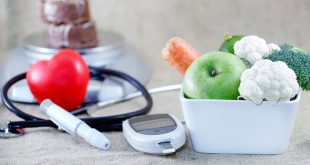Glucose monitoring helps people with diabetes manage their condition by providing information about the level of glucose in the blood. Traditionally such monitoring has involved the use of a blood glucose meter to measure the level in a blood drop on a test strip. This provides accurate information about the blood glucose level at a given point in time. To get a sense of blood glucose levels over the course of a day requires repeat blood drop testing over time.
Sometimes a more continuous and more detailed view of blood glucose trends is required. In these instances, continuous blood glucose monitoring may be recommended to provide accurate information about glucose levels in real time throughout the day and night. So what is a glucose sensor?
Continuous glucose monitoring is made possible by a tiny glucose-sensing device called a “sensor”. This is inserted just under the skin of the abdomen, where it measures the level of glucose in the tissue every 10 seconds. The sensor transmits this information to a hand-held receiver or insulin pump.
When is continuous glucose monitoring recommended?
Continuous glucose monitoring can be of great value in providing a full picture of an individual’s glucose trends. It can help point out fluctuations and trends that might otherwise go unnoticed - for example, dangerously low blood sugar levels overnight.
A healthcare professional may recommend continuous glucose monitoring on a temporary basis to provide valuable additional information about an individual’s blood glucose pattern. For example, evaluation may be recommended when an individual is pregnant or thinking about becoming pregnant. It can also be beneficial for people who want to reduce their A1C targets without raising their risk of hypoglycemia.
A 3-day evaluation can provide important insights about an individual’s glucose control.
Continuous glucose monitoring can provide:
- Information about the direction in which glucose levels are moving
- Early alerts about oncoming highs and lows
- Alerts about overnight highs and lows
- Details about how glucose levels are impacted by food, activity, and medication
Researchers continue to work on glucose sensing technologies to help improve diabetes management through more informed blood glucose monitoring and control. Potential advances include the “artificial pancreas”, which will require the linking of a continuous glucose monitoring system with an insulin delivery system and computer software to adjust insulin to meet glucose levels.
 Diabetes Care Community Learn, connect and care
Diabetes Care Community Learn, connect and care


